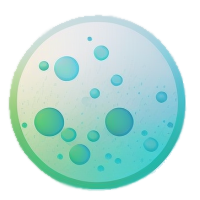Watermelon, scientifically known as Citrullus lanatus, is a fruit celebrated for its refreshing and juicy nature. While the actual use of watermelon in traditional perfumery has been limited, its evocative fragrance has become increasingly popular in modern scent compositions. The aroma of watermelon is characterized by a sweet, juicy, and slightly watery scent, reminiscent of summer and freshness. In perfumery, watermelon is used to impart a sense of lightness, sweetness, and youthful energy. Its fragrance is particularly favored in fragrances aimed at a younger audience or for summer-themed scents. The sweet and fresh aroma of watermelon adds a vibrant and playful character to perfume compositions, often used to create a feeling of freshness and liveliness. The challenge in capturing the true essence of watermelon in perfumery lies in its subtle and delicate scent, which is difficult to extract naturally from the fruit. As a result, the watermelon note in perfumes is often a synthetic recreation, designed to mimic the fruit's refreshing and sweet aroma. This synthetic approach allows perfumers to incorporate the essence of watermelon into a variety of fragrance profiles, from light aquatic types to sweeter, fruitier compositions.
Natural or Synthetic?
Natural extraction of watermelon fragrance is impractical due to its subtle scent and high water content. Synthetic versions are used to reliably replicate its refreshing and sweet aroma in a more consistent and potent form.
Fragrance Families Watermelon Most Commonly Found In
Show fragrances that contain Watermelon as a note



